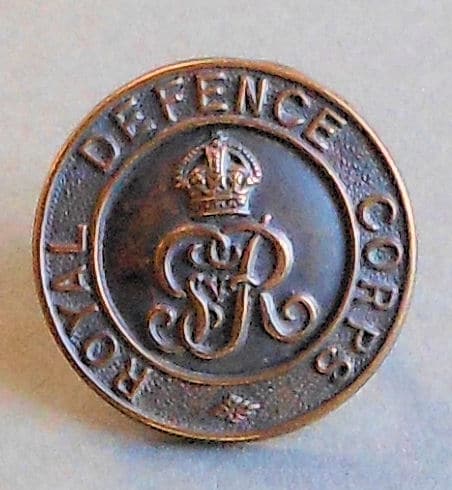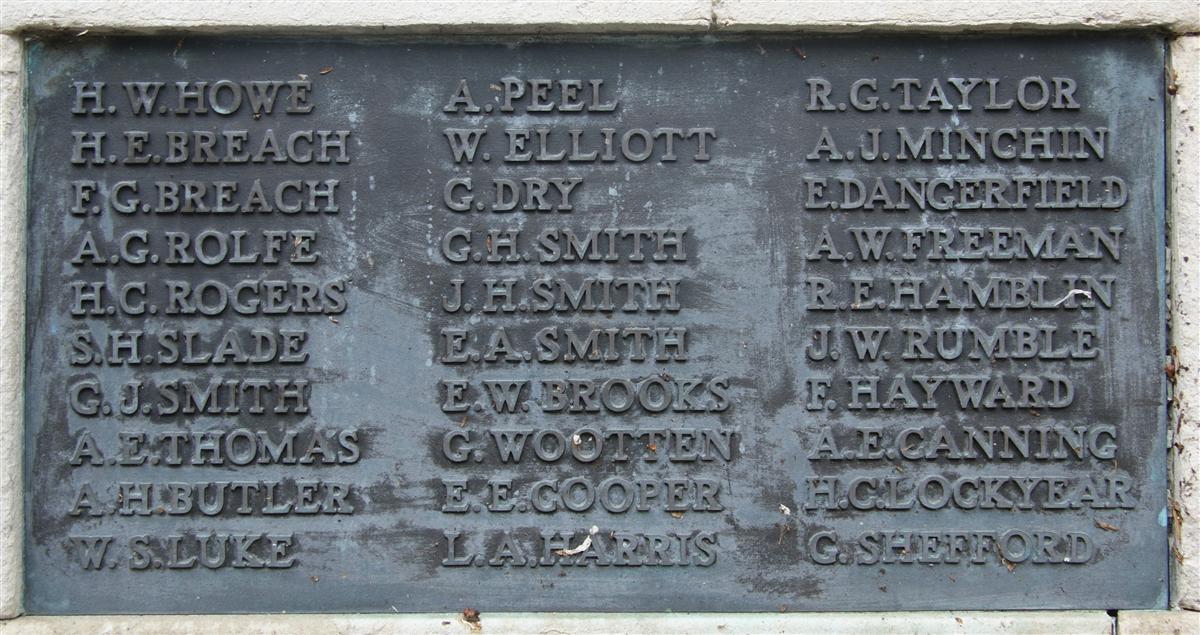A G Rolfe
A G Rolfe
A new electoral roll was created in mid-1918 following the expansion of the electorate by that year’s Representation of the People Act. The most significant provision of the Act was to extend voting rights to all males over the age of 21. This meant that the majority of the men serving with the armed forces needed to be registered, many for the first time. ‘Absent Voters Lists’ were compiled so these men could be traced and given a chance to vote should an election take place in their constituency or local government ward. Sadly, these lists have not survived for Berkshire electors, but the main register has survived and included a column that indicated a voter’s absence – those serving in the military (home or abroad) had ‘NM’ marked in this column.
One such absent voter was Albert George Rolfe from Harrison’s Buildings, Stroud Green. It seems likely that this was the man whose name appears on Tablet 10 of Newbury’s town war memorial as A G Rolfe. But who was he?

The badge of the Royal Defence Corps |
One small clue comes from the Active Service Roll printed in the local paper from 1914 to 1916 as part of the drive to encourage men to volunteer. Private A Rolfe from Stroud Green appears in this as a member of the National Reserve.
He does not appear in the 1911 census returns for Newbury or in any surviving street directories. Sadly Harrison’s Buildings were not included in extant street directories for the relevant period and no directories have survived between 1918 and the erection of the memorial in 1922. So there is no trace of Albert Rolfe as a Newbury resident – though this may change when the 1921 census returns are made public in 2021.
There is no A G Rolfe on the list of the fallen maintained by the Commonwealth War Graves Commission (CWGC), though there are a small number of A Rolfes and G Rolfes; there is no evidence to link any of these with Newbury. Whilst most of Britain’s war dead are included in the CWGC database it is not unusual to find names on war memorials that are not listed. In general there was little or no checking of a person’s qualification to appear on a memorial or, indeed, any definition of what would qualify a man for commemoration. In the case of the Newbury memorial it appears that the organising committee simply accepted nominations from all and included them all (with a possible exception for suicides). This has meant that men were nominated if their family felt that their death was due to their war service, even months or years after that service ended. Even the CWGC will accept post-service deaths (up to 31 August 1921) providing it can be proved that the cause of death was war service related (died of wounds or disease contracted while serving).
Until further information is available from the 1921 census there is little hope of determining who exactly Albert George Rolfe was, but one possibility is a man born in Burghclere in 1884 and raised in the Brimpton/Wasing/Aldermaston area. This Albert died in 1921 and was buried in Brimpton churchyard on 21 March 1921 so, if he is the man remembered on the Newbury memorial, he will not appear in the 1921 census (taken on 19 June), nevertheless his widow, Georgina, and children should appear. In available records the family are in Brimpton (1911) and Reading (1939).
Albert’s death in early 1921 matches only one entry in the General Register Office index to deaths in England and Wales – that of Albert G Rolfe whose death was registered in Bromley, Kent, in the first quarter of 1921 (Vol 2A Page 712). His death was reported in the local paper at the time:
Newbury Weekly News, 17 March 1921 – Deaths
ROLFE. – on March 15th, at the Pensions Hospital, Orpington, Kent, from dysentery, Albert George, the beloved husband of Georgina Rolfe, of Marsh Farm, Pangbourne, aged 36 years.
It seems likely that this is the same man who was buried in Brimpton and shows that he was still under treatment in a military hospital far from home. Had his record survived the fire that destroyed around 70% of such records in 1940 the picture would be clearer!
There is little to show why the husband of a woman living in Pangbourne was buried in Brimpton and remembered on the Newbury memorial – but it is possible. He certainly appears to have been the man listed in the Newbury electoral roll in 1918 since his wife, Georgina, is also listed. One posibility is that he died too late for inclusion on the Pangbourne or Brimpton memorials (unveiled 7 October 1920 & 16 January 1921 resp.), which meant that Georgina's desire to see him commemorated somewhere led to her putting his name forward for the Newbury memorial.
 Rolfe's name on Newbury War Memorial. (upper left) |
However, this Albert is too young to have been serving with the National Reserve, which was made up mainly of old soldiers, too old to be members of the Reserve or Special Reserve and hence, typically, in their 40s or 50s. However, the listing in the local paper’s Active Service Roll dates back to the early months of the war (his name first appears in January 1915) and may be in error or reflect a starting point in his army career – the younger, fitter, volunteers for the National Reserve were transferred to active units.
A G Rolfe is remembered on Tablet 10 of the Newbury Town War Memorial.

Find a memorial :
| Died this day: | |
| 29 November 1946 | |
| L A Shears | |
| Hungerford |

Like this site? Show your appreciation through a donation to a great charity.